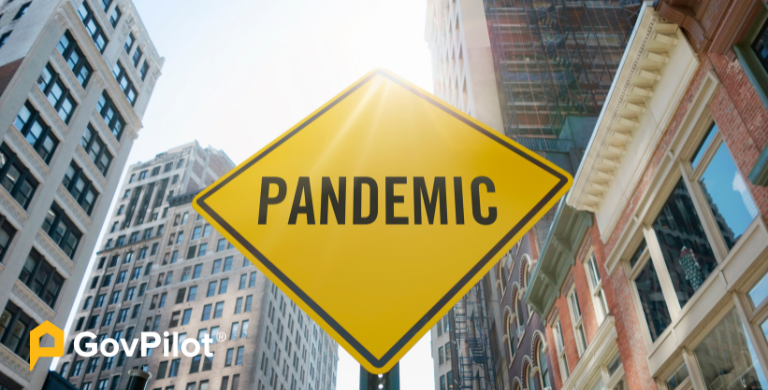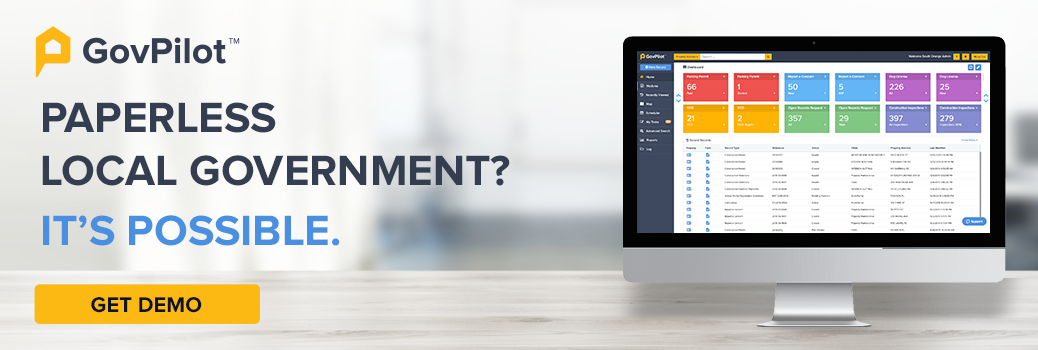Effective crisis communication is the cornerstone of successful emergency response in local government. Whether dealing with pandemics, natural disasters like hurricanes and floods, or any other large-scale emergency, clear, accurate, and timely communication regarding crises is essential.
During crises, municipalities face immense pressure to keep citizens safe and informed, and the ability to do so effectively can make the difference between a well-managed emergency situation and one that spirals into chaos.
This article explores the role of crisis communication, lessons learned from recent pandemics and natural disasters, and strategies municipalities can adopt to improve their communication systems.
Through government examples of both successes and challenges, we'll examine how local governments can build more resilient, responsive crisis communication plans, emphasizing the tools and technology that can support them, including solutions like GovPilot.
The Role of Crisis Communication in Local Governments
Crisis communication cannot be undersold as it is one of the most important responsibilities of the local government. Read bout some of the aspects to crisis communications for governments here:
-
Public Safety
When a crisis strikes, whether it’s a natural disaster or a public health emergency, the primary goal of local government communication is to ensure public safety.
Accurate information needs to reach the public quickly, informing citizens about potential dangers, safety protocols, and available resources. Delayed or unclear messaging can lead to panic, confusion, or, in the worst cases, harm to residents.
Effective communication fosters trust, enabling local governments to guide their communities through uncertainty and keep them calm in the face of rapidly evolving situations. As we saw during the COVID-19 pandemic, municipalities that provided timely updates were able to mitigate public fear and anxiety more successfully. For example, some cities used social media, emergency apps, and public dashboards to relay real-time information about infection rates, health protocols, and resource availability.
Check out this information about real time updates and Leveraging Software for Instant Citizen Updates and Feedback here!
-
Building Trust
Trust is essential during a crisis, and transparent communication is the key to establishing it. If citizens believe they are receiving accurate and timely updates from their local officials, they are more likely to follow recommended safety measures and guidelines.
Conversely, inconsistent messaging or misinformation can erode trust, making it difficult for governments to maintain order and protect their communities. During natural disasters like hurricanes or floods, maintaining a clear and consistent flow of information is vital to helping residents make informed decisions about evacuations, shelter, and safety precautions.
Learn more about Building Trust With Tech and How Software Enhances Engagement.
-
Managing Expectations
Crisis communication is also about managing expectations. In any emergency, situations can change rapidly, and citizens need to be prepared for unexpected developments.
Clear communication helps to ensure that people understand the scope of the crisis, what to expect, and how long it might last. When local governments are upfront about the challenges they face, they can avoid fostering false hopes or causing additional frustration.
Learn about Local Governments Community Safety Strategy.
The Basics of Crisis Communication
To successfully communicate during a crisis, municipalities need to focus on three key elements: timeliness, clarity, and consistency.
1. Manage Timelines
Information must be delivered quickly to keep up with rapidly changing conditions. Whether responding to a natural disaster or public health emergency, delays in communication can be costly, both in terms of public safety and trust. GovPilot’s digital tools enable municipalities to deploy information efficiently and at scale, ensuring that updates reach citizens as soon as possible.
Check out A Guide To Time Saving Strategies For Local Governments!
2. Provide Clarity
Messages should be simple and direct, avoiding jargon that could confuse the public. In a crisis, people may be anxious and overwhelmed, making it difficult for them to process complex information.
To overcome this, local governments should use clear language that is easy for all citizens to understand. During the COVID-19 pandemic, cities that employed straightforward, actionable communication were better able to ensure compliance with public health guidelines.
Check out They Key To Improving Transparency In Local Government From GovPilot
3. Establish Consistency
Inconsistent messaging is one of the biggest communication pitfalls during crises. Different departments or officials providing conflicting information can lead to confusion and reduce the effectiveness of emergency response efforts.
It is crucial that all communication channels—whether social media, press releases, or emergency alerts—deliver the same information. By using platforms like GovPilot, municipalities can centralize their communication efforts, ensuring that all departments are on the same page and citizens receive a unified message.
Lessons Learned From Pandemic and Disaster Responses
Read about some of the most helpful lessons when it comes to government disaster responses in this section:
-
Successful Examples
During the COVID-19 pandemic, some municipalities effectively leveraged digital platforms to disseminate critical information.
Cities like New York and San Francisco employed social media to provide real-time updates, while also utilizing emergency apps and text alerts to ensure wide reach.
Public dashboards that displayed infection rates, hospital capacities, and vaccination sites proved to be effective tools for keeping citizens informed.
-
Challenges Faced
On the flip side, there were plenty of municipalities that struggled with crisis communication during COVID-19. Delays in messaging, inconsistent information, and a lack of clear direction led to confusion.
During natural disasters such as hurricanes, some cities failed to coordinate timely updates about evacuation plans, leaving citizens uncertain about the correct course of action.
This highlights the importance of having a pre-established communication plan in place before a crisis occurs.
-
Innovative Solutions
Municipalities that adopted creative approaches to crisis communication were better able to manage emergencies. Innovative solutions like public dashboards, text message alerts, and even partnerships with local news outlets helped ensure that citizens received timely and accurate information.
GovPilot’s tools can help local governments implement these types of solutions by providing centralized platforms for distributing emergency alerts and coordinating communication efforts across departments.
Read about GovPilot’s guide to Interdepartmental Government Communication Strategy to learn tips to improve your government’s effectiveness.
Best Practices For Effective Crisis Communication
Be prepared for any future crisis that might befall your community before it happens! Read this section of the article to learn how:
1. Establish a Communication Plan
Before a crisis strikes, local governments should have a communication plan in place. This plan should outline key responsibilities, messaging strategies, and the channels through which information will be distributed. Ensure all roles and responsibilities are clearly defined in this document- and make sure it’s widely available for everyone!
Having a clear plan helps to ensure that communication remains effective, even in the chaos of an emergency. GovPilot can assist in developing and automating these plans, making it easier to execute them when the need arises!
Learn all of GovPilot’s available solutions in our Extensive Software Solutions Library!
2. Utilize Multiple Channels
It’s important to leverage multiple communication channels to reach the widest possible audience. While some citizens may rely on social media, others may prefer email alerts or text messages. The more channels used, the more likely it is that critical information will reach every corner of the community.
Check out GovPilot’s Local Government Social Media Strategy here!
3. Maintain Regular Updates
In an emergency, situations can evolve rapidly. Regular updates, even if there is no new information to share, help reassure citizens that their local government is monitoring the situation and working to keep them safe.
4. Monitor Public Sentiment
During crises, it’s important to monitor how the public is responding to communications. This can help identify gaps in messaging or areas where additional clarification is needed. Platforms like GovPilot offer tools for tracking public sentiment, enabling municipalities to adjust their communication strategies in real time.
Take Crisis Communication Planning Seriously Now!
Local governments need to continuously refine their crisis communication strategies by learning from past experiences. Utilize resources and constituents' opinions! By leveraging modern technology, municipalities can streamline their communication efforts and ensure that citizens stay informed, safe, and connected during emergencies.
GovPilot offers digital tools that can help municipalities create more effective communication plans, coordinate responses, and ensure that information reaches citizens quickly. To learn more, schedule a consultation today.
FAQs
- What are the most common communication challenges during crises?
Common challenges include delays in communication, unclear messaging, and inconsistent information across different platforms. Oftentimes, municipal governments aren’t aligned on a plan with enough time to act!
- How can local governments improve crisis communication?
Local governments can improve by using digital tools like GovPilot to centralize messaging, ensuring clarity, and leveraging multiple communication channels to reach all citizens.
Read on:
- Best Public Sector Software: Ways Governments Use Technology to Save Time & Money
- Government Continuity Strategy: Procedures During a Crisis
- AI in Government and Beyond: Bringing Artificial Intelligence to Your Municipality
- What is Azure for Government? Everything to Know
- What is Municipal Software? Understanding Government Software for Municipalities & Counties
- 7 Government Cybersecurity Best Practices: Keep Data Secure & Prevent Ransomware Attacks
- 13 Benefits of Digital Transformation for Local Government









